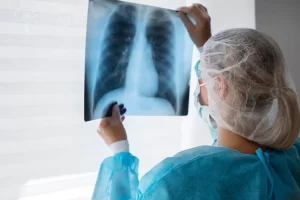 Chronic Obstructive Pulmonary Disease (COPD) is a progressive respiratory condition that affects millions worldwide.
Chronic Obstructive Pulmonary Disease (COPD) is a progressive respiratory condition that affects millions worldwide.
COPD is a challenging but manageable condition with the right approach. Recognizing its signs, understanding the causes, and exploring effective treatments are crucial steps in living well with COPD.
Understanding its signs, causes, and available treatments is crucial for managing and improving the quality of life for those diagnosed.
1. Signs and Symptoms
Recognizing the signs of COPD is vital for early intervention. Common symptoms include persistent cough, shortness of breath (especially during physical activity), wheezing, and tightness in the chest. If you or a loved one experiences these, seeking medical attention promptly is essential.
2. Causes and Risk Factors
COPD is primarily caused by long-term exposure to irritants that damage the lungs. Smoking is the leading cause, but exposure to air pollutants, workplace dust or chemicals, and genetic factors also contribute. Individuals with a history of lung infections may be at a higher risk.
3. Diagnosing COPD
Healthcare professionals use various diagnostic tools to assess lung function and confirm Chronic Obstructive Pulmonary Disease. Spirometry tests measure the amount of air a person can exhale, helping determine the severity of the condition.
4. Treatment Approaches
While COPD is a chronic condition, various treatments aim to manage symptoms and enhance overall well-being. Medications, including bronchodilators and steroids, are often prescribed. Pulmonary rehabilitation programs, lifestyle modifications, and oxygen therapy may also be recommended.
5. Lifestyle Adjustments
Making lifestyle adjustments is crucial for COPD management. Quitting smoking is paramount in slowing down the progression of the disease. Additionally, adopting a healthy diet, staying physically active within one’s limitations, and avoiding respiratory irritants contribute to better outcomes.
6. Supportive Therapies
Supportive therapies, such as oxygen therapy and pulmonary rehabilitation, play a vital role in improving the quality of life for COPD patients. Pulmonary rehab includes exercise training, education, and support to enhance daily functioning.
If you suspect COPD or have been diagnosed, collaborating closely with healthcare professionals ensures tailored care and support for a fulfilling life despite the challenges posed by the condition.
Picture Credit: Freepik
